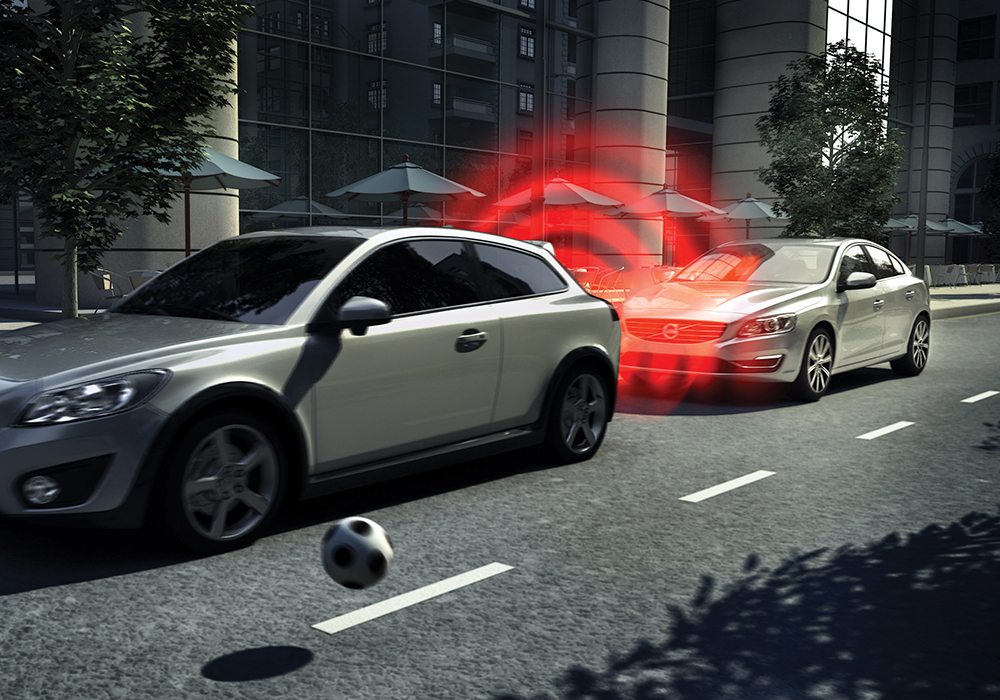Expert Panel: Connectivity

Technology is changing the way we travel. GreenFleet quizzes its telematics expert panel on how connectivity is facilitating new mobility trends, aiding fleet management, and reducing CO2 emissions.
According to Department for Transport’s road‑use statistics, 64 per cent of our journeys are done in the car, making it still the preferred mode of transport. But in the digital, smart phone age, the way we travel is changing. We are no longer restricted to a choice of either car or public transport, and at the mercy of traffic or transport delays. We can now plan a journey taking in the bigger picture – traffic, parking, transport delays, congestion zones – and choose to get to our destination using an efficient mix of travel modes.
The traditional idea of car ownership is also being challenged. For city dwellers especially, where parking, congestion, and low-emission zones are an issue, alternative travel services, such as car clubs and car sharing, offer an easily accessible alternative. Or if that is a step too far, these services can at least provide another option to owning a costly second vehicle, especially if it is only used on occasion.
This new way of viewing mobility is facilitated by connectivity – cars that are equipped with the internet that can communicate with their surroundings and the driver. On a basic level, this could be the car communicating to the driver via a smart phone; in the future however, this could be vehicles communicating with other vehicles, as well as the road infrastructure around it – making ideas such as self driving cars a reality.
“Connectivity has allowed us to be more informed, up to date, and be able to make better choices about travel,” says Nick Walker, managing director, at RAC Telematics. “In many ways we are still at an early stage in the journey when it comes to the connected car, but we can already see things like traffic information connected to vehicle location and route planning already providing benefits. If you think that the mid 1990s was all about the launch and development of the internet, 20 years later we have moved to the development of the Internet of Things, and the connected car is very much part of that evolution.”
Martin Kadhim, partnerships director for Lightfoot, said: “Our road travel is already being heavily influenced by integrated technologies. Remote monitoring of traffic conditions inform variable speed limits to keep traffic moving through congestion; overhead matrices are able to warn of obstructions and hazards, and number plate recognition is detecting pre-payment of toll charges, and capturing untaxed vehicle, speeding and car crime data.”
Yon Copitch from Traffilog said: “In the past getting lost was a regular hazard, taking wrong turns, missing junctions and getting stuck in traffic. Today we use satellite navigation to find the fastest route and rarely get lost.”
According to research firm Gartner, by 2020, one in five vehicles will have some sort of wireless network connection, accounting for more than a quarter of a billion cars on global roads. At the moment, most new cars have some form of connectivity, the challenge however is getting the driver to use the technology and its data to its full potential.
Jack Palmer, senior project manager at TU‑Automotive, said: “We really are at the tip of the iceberg in regards to how connectivity can influence the way we travel. New models of passenger and commercial vehicles are coming off the assembly line with built-in 4G capabilities and a connection to the industrial IoT and cloud. But how many people own these cars, and if they do, how many people actually utilise the connected services that these cars possess? The answer to both questions is not many, or not enough. Until we reach a critical mass of connected cars/trucks on the road, used to their full potential, real innovation will not be realised.”
Fleet benefits
Connectivity, and the data it creates, gives fleet managers more visibility into how their fleet is run, allowing them to identify where improvements can be made. It allows managers to see where drivers are and how they are driving, what potential vehicle faults are coming up, and what the best routes to take are.
RAC’s Nick Walker said: “Connected vehicles provide fleet operations with much more insight than ever before, enabling them to be proactive with their vehicles. For example, fleet operations can optimise the planning of vehicle servicing, repairs and maintenance through access to vehicle fault data and service indicators. Also, greater insight into fleet performance enables more informed decision making about which types of vehicles can perform better for the business than others.”
Martin Kadhim from Lightfoot agrees: “Being able to gather data from a vehicle based upon its current service status and work to a preventative rather than fixed-time maintenance schedule will allow operators to book vehicles in where abnormal trends in engine data indicate a potential fault brewing. Developments such as these lead to reduced emergency down-time and enhanced scheduling for vehicles being off-road.”
Jack Palmer from TU Automotive says: “Fleet management has always been and will always will be about saving costs and saving time. This can be enhanced through connectivity by diagnostics/prognostics data that aids in maintaining a fleet. For example, if you can identify that a tyre is losing grip or air before it becomes a problem, you can be proactive in booking the vehicle in for maintenance, thus avoiding time off the road in the future, which may present a bigger problem and higher costs.”
For delivery and logistics companies, tracking, routing and scheduling systems can make operations much more efficient, in terms of getting goods to where they need to be in time. Jack Palmer adds: “The connected vehicle has given trucking fleets the ability to improve how routes are planned – often away from traffic hotspots or routed in a way which is the most efficient for picking up loads.”
Driver insight
Another fundamental benefit connected technology has for fleets is the insight it gives into the driver. An organisation can buy the most efficient vehicles, but if they are being driven badly, this negates any good intentions at the procurement stage. Telematics systems send data back to head office on how staff are driving – whether they are speeding, or braking and cornering too harshly. Many systems give real-time feedback to drivers too so they can modify their driving style whilst on the road. Data on driver performance allows managers to give the appropriate training to staff, and in some cases, provide incentive schemes that reward good driving.
Martin Kadhim from Lightfoot says: “We believe that where technology is at its most exciting and powerful is where it actively influences an individual to change their behaviour in a positive and sustained manner – not from the point of view of increasing brand loyalty to a particular retain outlet on a motorway service station, but in terms of making better, safer, more efficient drivers. This is where our customers are seeing biggest gains – where they are using technology to connect the driver with the vehicle’s engineering, so that the driver is being coached by the vehicle to drive in the manner in which the vehicle was designed. Improve the driving behaviours and many of your other problems are immediately reduced.”
Jack Palmer from TU-Automotive said: “Connected vehicles are a tremendous asset to fleets as they can now track exactly how well driver and vehicles are operating. On the driver behavioural side, telematics service providers offer fleets the ability to see how long drivers are on the road, how well they are driving (hard braking statistics, incident reporting) and data can even be provided on work performance metrics (such as percentage on time, medical history) that can help fleets inform their HR strategy and company culture so that they can attract and retain good drivers.”
Yon Copitch from Traffilog says: “Our company has over 250,000 connected vehicles in 28 countries. All our customers are reducing costs, saving money and reducing downtime of vehicles. Driver behaviour feedback and preventative maintenance ensures that fleet managers are kept up to date in real time and allow them to react quickly to any issues and maintain safety.”
What’s more, tracking, camera and safety systems means the driver is safer, with head office knowing where they are at all times, with many systems or cars themselves notifying back office if a collision has occurred.
Environmental benefits
Connected vehicles and new mobility trends have great potential to reduce emissions and air pollution. Being able to monitor and coach staff so they drive more efficiently reduces fuel use and therefore emissions. What’s more, efficient routes which avoid traffic, means less stopping and starting whilst letting out fumes.
Martin Kadhim from Lightfoot says: “Technology alerts managers to excessive idling, and highways traffic management technology is assisting with maintaining traffic flow through congested areas. By having drivers lighter on their right foot, better aware of gear selection and more sensitive to long periods of idling at complex traffic lights or roadworks all play a major part in driving down CO2 levels.”
Nick Walker from RAC said: “Connectivity is helping drivers and fleet managers to better manage fuel usage which in turn reduces CO2 emissions. By deploying connected services that monitor driver behaviour and by introducing a system that gives direct feedback and advice to drivers, it is helping to create safer drivers and reduce CO2 emissions. But CO2 is not only about better driving. Well maintained and regularly serviced vehicles will minimise emissions. Connected technology today can alert fleet managers and drivers to vehicle servicing and maintenance needs.”
Yon Copitch from Traffilog said: “Primarily connectivity has seen, through driver behaviour, a reduction in fuel costs as drivers become safer and more efficient. Diagnostic solutions help fleet managers to keep vehicles in better shape, predicting failures and maintaining vehicles to higher standards. These solutions all provide a reduction in CO2 emissions.”
A greener way to travel
New mobility trends which challenge the idea of traditional car ownership, such as car sharing, are helping to reduce the amount of vehicles on the road, therefore easing congestion and air pollution.
When it comes to electric vehicles, connectivity can play a major part in facilitating journeys. How far electric vehicles can travel, where they can recharge, and how long it will take means drivers need to think more carefully about their journey than if they were driving a conventionally fuelled car. Technology can help by connecting the vehicle to the outside world, letting drivers know where nearby charging points are and keeping them updated on battery life.
Connectivity in electric vehicles can also help with journey planning should the range not be enough to reach the final destination. For example, the system could suggest driving to a train station with a car park with charge points, doing the remainder of the journey on train, and then returning to a fully charged vehicle. All with real‑time information on how trains are running and whether there is traffic on route. This connectivity to the outside world can play a significant role in reassuring those unsure of buying an electric vehicle because of concerns over range and limited charging infrastructure.
Data from diverse sources
Looking to the future, Martin Kadhim from Lightfoot believes increased integration of data will bring about significant developments. “Huge developments are likely through the integration of data derived from telematics with data that comes from other sensors and connected devices,” he says.
“Quite what this looks like no one yet knows, but there will surely be a boom in the provision of timely, relevant and location specific information to assist both fleet managers and drivers.”
Nick Walker believes that interpreting the data created from connectivity is key if anything meaningful is to come out of technology. He said: “Connectivity is providing a very high level of insight into the vehicle and how the vehicle is driven. This will increase over time. But modern mobility requires that insight to be interpreted into meaningful information, and the presentation of that information needs to be instant and convenient. Apps will become ever more important as they link vehicle data, driver data, and useful information together to help manage modern mobility. Apps covering route planning, fuel stops, and journey advice will turn connected data into more and more compelling services for all.”
Yon Copitch from Traffilog believes that the information from connected cars should be available as one solution: “The connected vehicle is the future with intelligent satellite navigation, CCTV, WiFi, passenger counting, alcohol testing, tachograph download, accident reporting, and messaging already available as one solution. It is inevitable that fleet managers will look to single supplier technology and the avoidance and expense of multiple sims.”
The future
In February this year, the UK government announced it is to invest £20 million to develop the next generation of autonomous vehicles. The projects will research and develop enhanced communication between vehicles and roadside infrastructure or urban information systems, including new ‘talking car technologies’. The UK government, and indeed many others around the world, believe self driving cars can lead to less congestion, air pollution, and improved road safety.
For fleets, this could also lead to improved productivity, as staff can spend time working on a laptop or making calls instead of driving. Whilst this vision may seem futuristic and unrealistic, many vehicles already have self‑driving functions, such as auto parking. What’s more, autonomous vehicles are already being tested on roads in Bristol, Coventry, Milton Keynes and Greenwich.
Jack Palmer from TU Automotive comments: “The IoT outside the vehicle will be realised by connecting to the smart city – road signs, traffic lights and crossings – so that the vehicle can paint a fuller picture of its surroundings. This will be especially relevant for the autonomous vehicle which will need connectivity to be truly realised.”
Nick Walker from RAC shares his vision of the future: “Looking forward we may live in a world where the traveler summons their autonomous pod from the touch of a button on their smart watch or device, and gets taken to their destination, without having to think about where they’re going or how to get there, as the connected vehicle will do all the thinking for them. This leaves us free to work or catch up with people while we’re travelling, so that time commuting or crawling through traffic, which is often seen as dead time, can be eliminated.”
Jack Palmer, TU-Automotive believes connectivity will improve other areas of our lives. He says: “Cross ‘smart-industry’ collaboration will be seen much more in the next few years. Connected home features (thermostats, lighting, white goods) will be able to be controlled from the vehicle. Likewise, connected healthcare and retail will find use cases in the car. Already, we are seeing driver monitoring (such as tracking blood sugar levels for diabetics) entering the vehicle and in-vehicle digital media and commerce (through targeted advertising or POIs) are presenting another way for brands to reach consumers. And that’s just within the vehicle.”
Expert final thoughts
"The connected vehicle is the future with intelligent satellite navigation, CCTV, Wi-Fi, passenger counting, alcohol testing, tachograph download, accident reporting, and messaging already available as one solution and provided by Traffilog. It is inevitable that fleet managers will look to single supplier technology and the avoidance and expense of multiple sims." "Connectivity is providing a very high level of insight into the vehicle and how the vehicle is driven. This will increase over time. But modern mobility requires that insight to be interpreted into meaningful information, and the presentation of that information needs to be instant and convenient. Apps will become ever more important as they link vehicle data, driver data, and useful information together to help manage modern mobility. Apps covering route planning, fuel stops, and journey advice will turn connected data into more compelling services for all." www.rac.co.uk/business/telematics "We see the biggest opportunities for adding value likely to come in the area of driver well-being. For example, we are already developing enhancements that will bring a whole range of additional features to drivers ranging from automatic connection to emergency services in the event of an accident, to forwarding location and fault details to breakdown services in the event of a mechanical fault. Our view is that there is only so far you can go monitoring drivers every second of the day and have more to gain by improving their well-being and helping facilitate better driving." "The vehicle of the future will continue to get smarter with the number of data points connecting to it becoming greater. Cross‑‘smart industry’ collaboration will be seen much more in the next few years. Connected home features (thermostats, lighting, white goods) will be able to be controlled from the vehicle. Likewise, connected healthcare and retail will find use cases in the car. Already, we are seeing driver monitoring (such as tracking blood sugar levels for diabetics) entering the vehicle. Meanwhile, in-vehicle digital media and commerce (through targeted advertising or POIs) are presenting another way for brands to reach consumers."Yon Copitch
Nick Walker
Martin Kadhim
Jack Palmer






